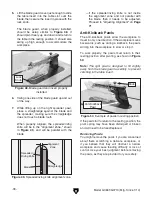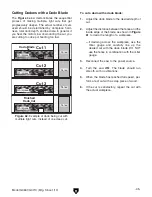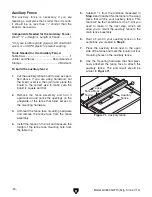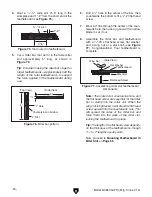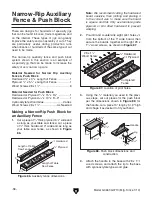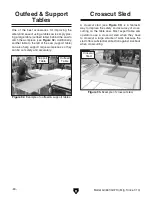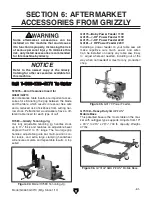
-46-
Model g0661/g0713 (Mfg. since 1/10)
Blade
Ldg`e^ZXZ
;ZcXZ
Cut 1
Figure 63. First cut for a single-blade dado.
a ripping blade (described on
page 34) is typically
the best blade to use for cutting dadoes when
using a standard blade, because it removes saw-
dust very efficiently.
To use a standard saw blade to cut dadoes:
1. disConnECt saW FroM poWEr!
2. Ensure that the riving knife and standard table
insert are installed and properly adjusted. do
not use the standard insert if it has lost the
zero clearance feature by modification; if so,
you must install the optional Model t21876.
3. Mark the width of the dado cut on the
workpiece.
include marks on the edge of the
workpiece so the cut path can be aligned
when the workpiece is lying on the table.
4. raise the blade up to the desired depth of cut
(depth of dado channel desired).
5. set up the saw for the type of cut you need
to make, depending on if it is a rip cut (
page
42) or crosscut (page 43).
6. align the blade to cut one of the dado sides,
as shown in
Figure 63.
Cutting Dadoes with a Standard
Blade
7. reconnect the saw to the power source and
turn the saw
ON
. allow the blade to reach full
speed, then perform the cutting operation.
8. repeat the cutting operation on the other
side of the dado channel, as shown in
Figure
64.
9. Make additional cuts (see Figure 65) in the
center of the dado to clear out the necessary
material. the dado is complete when the
channel is completely cleared out.
Ldg`e^ZXZ
;ZcXZ
Cut 2
Blade
Ldg`e^ZXZ
;ZcXZ
Cuts 3+
Figure 64. second cut for a single blade dado.
Figure 65. additional single blade dado cuts.







